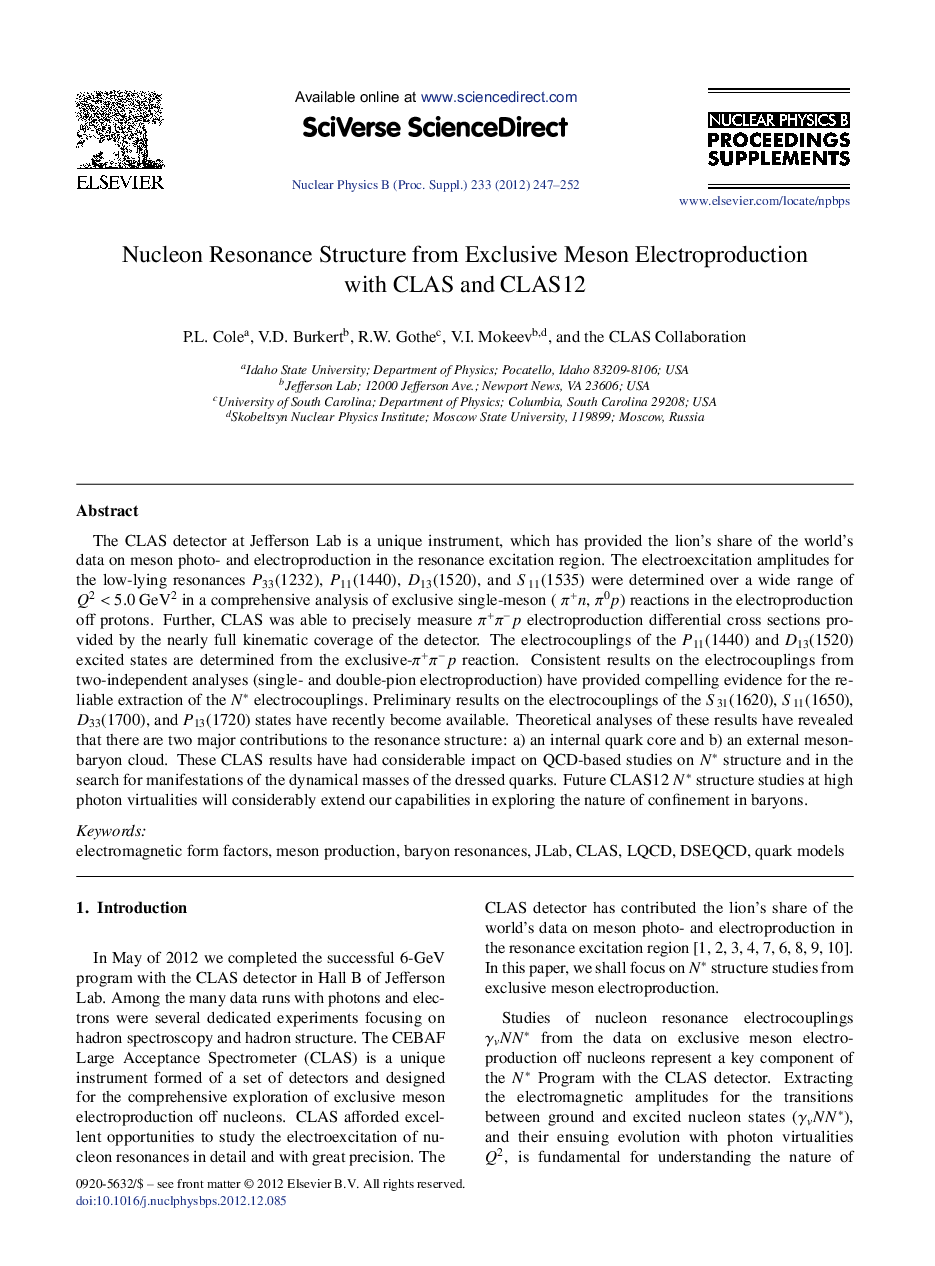| Article ID | Journal | Published Year | Pages | File Type |
|---|---|---|---|---|
| 8185602 | Nuclear Physics B - Proceedings Supplements | 2012 | 6 Pages |
Abstract
The CLAS detector at Jefferson Lab is a unique instrument, which has provided the lionʼs share of the worldʼs data on meson photo- and electroproduction in the resonance excitation region. The electroexcitation amplitudes for the low-lying resonances P33(1232), P11(1440), D13(1520), and S11(1535) were determined over a wide range of Q2<5.0GeV2 in a comprehensive analysis of exclusive single-meson (Ï+n,Ï0p) reactions in the electroproduction off protons. Further, CLAS was able to precisely measure Ï+Ïâp electroproduction differential cross sections provided by the nearly full kinematic coverage of the detector. The electrocouplings of the P11(1440) and D13(1520) excited states are determined from the exclusive-Ï+Ïâp reaction. Consistent results on the electrocouplings from two-independent analyses (single- and double-pion electroproduction) have provided compelling evidence for the reliable extraction of the Nâ electrocouplings. Preliminary results on the electrocouplings of the S31(1620), S11(1650), D33(1700), and P13(1720) states have recently become available. Theoretical analyses of these results have revealed that there are two major contributions to the resonance structure: a) an internal quark core and b) an external meson-baryon cloud. These CLAS results have had considerable impact on QCD-based studies on Nâ structure and in the search for manifestations of the dynamical masses of the dressed quarks. Future CLAS12 Nâ structure studies at high photon virtualities will considerably extend our capabilities in exploring the nature of confinement in baryons.
Related Topics
Physical Sciences and Engineering
Physics and Astronomy
Nuclear and High Energy Physics
Authors
P.L. Cole, V.D. Burkert, R.W. Gothe, V.I. Mokeev, the CLAS Collaboration the CLAS Collaboration,
